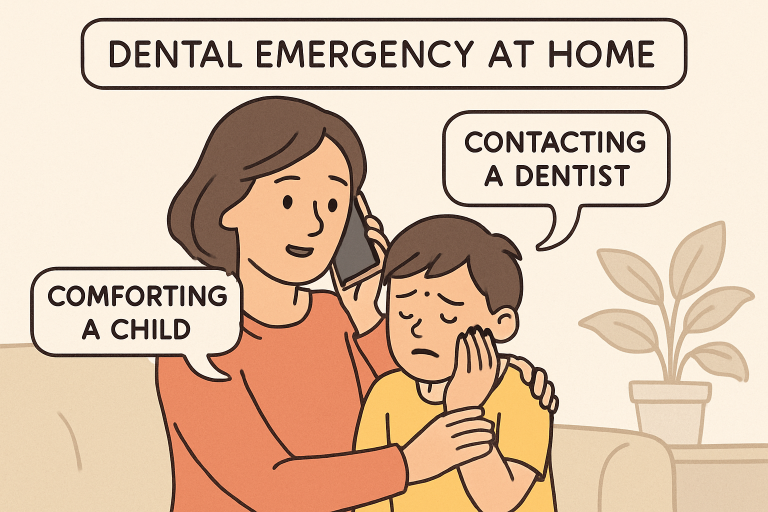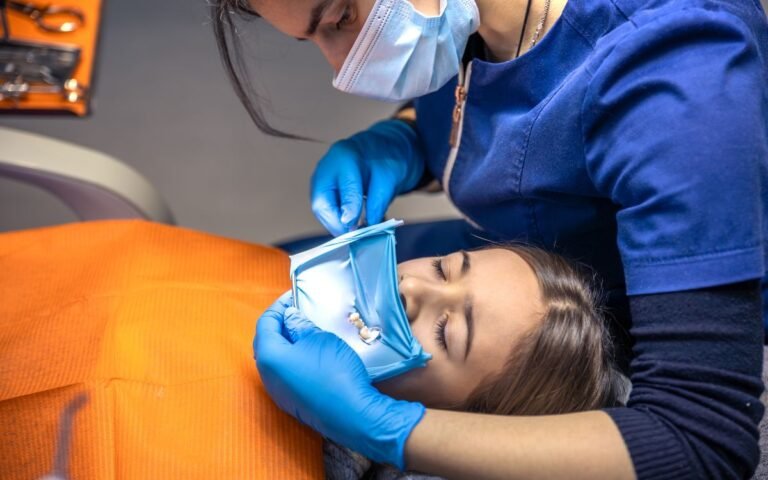Introduction
Dental emergencies can happen at any time, and knowing how to handle them can prevent further damage and reduce discomfort. Prompt action can often save teeth and protect your child’s long-term oral health, especially when children are involved. If you live in the Hampton area and are seeking immediate assistance, connecting with an emergency pediatric dentist in Hampton can provide fast and expert care in critical moments.
When dental trauma strikes—whether it’s a toothache, broken tooth, or a knocked-out tooth—it’s natural to feel anxious. Remaining calm and following proper steps can help preserve teeth and minimize complications. For families, establishing an emergency plan and knowing where to seek professional dental care can make all the difference during urgent situations.
Many dental emergencies require swift professional intervention, but some can be managed temporarily at home. This guide covers the most common dental emergencies, what you can do immediately, and when to contact a dentist right away. Understanding these steps can empower you to act quickly and confidently.
Additionally, parents and guardians should prepare for unexpected situations by keeping emergency dental contacts handy, ensuring a rapid response that could be critical for a child’s oral well-being.

Toothaches
Toothaches are one of the most frequent dental emergencies in both children and adults. Pain may vary in intensity and can be triggered by cavities, infection, or even gum disease. To ease discomfort and reduce the risk of further complications, follow these steps:
- Rinse the mouth thoroughly with warm water to keep the area clean.
- Gently floss to remove any food particles stuck between teeth.
- Apply a cold compress on the outside of the cheek to alleviate swelling.
- Never put aspirin or any painkiller directly on the gums, as it may burn or damage tissue.
Dental pain should not be ignored—schedule a dental appointment as soon as possible to determine the underlying cause and prevent worsening symptoms. Serious toothaches can signal infections that, if untreated, may lead to systemic health issues.
Chipped or Broken Teeth
Accidents, sports injuries, or biting on hard objects can lead to chipped or broken teeth. When this happens:
- Retrieve and save any broken pieces if possible.
- Rinse your mouth and the fragments with warm water to keep them clean.
- Apply gauze to bleeding sites and hold for 10 minutes or until bleeding stops.
- A cold compress can help with pain and swelling.
Seeking dental care right away increases the likelihood that your dentist can repair or restore the tooth effectively. Even small chips can lead to larger cracks or sensitivity if not addressed quickly.
Knocked-Out Teeth
A knocked-out tooth is a genuine dental emergency where time is critical, especially for children. The chances of rescuing the tooth are highest if you act within the first hour. Here’s what to do:
- Hold the tooth by the crown, avoiding contact with the root.
- Rinse the tooth in cool water if it’s dirty, but don’t scrub or remove attached tissue fragments.
- Gently try to reinsert the tooth in the socket, facing the right direction.
- If you can’t reinsert, place the tooth in a glass of milk or saline solution.
Visit an emergency dentist immediately to maximize the possibility of saving the tooth. The American Dental Association provides more details about handling knocked-out teeth.
.
Lost Fillings or Crowns
Fillings and crowns may loosen or fall out due to decay or trauma, causing sensitivity and pain. The following steps can help reduce discomfort until you see your dentist:
- Store the crown securely to bring to your next dental visit.
- If the exposed tooth is painful, a small amount of clove oil applied with a cotton swab may provide relief.
- You can temporarily reattach the crown using dental cement, toothpaste, or denture adhesive.
Timely dental treatment is important to avoid damaging the underlying tooth structure or risking infection.
Abscesses
An abscess is a severe infection in the gums or root of a tooth. Abscesses are dental emergencies requiring prompt attention, as infection can spread rapidly. If you notice a pimple-like swelling, severe pain, or fever:
- Rinse your mouth several times a day with a mild saltwater solution.
- Apply a cold compress to decrease swelling and pain.
Seek urgent dental care to prevent complications. Delaying treatment for an abscessed tooth can result in widespread infection and serious health consequences.
Soft Tissue Injuries
Cuts or lacerations inside the mouth—such as the tongue, cheeks, gums, or lips—may bleed and feel alarming. Here’s how to stop bleeding and protect oral tissues:
- Rinse the area gently with a mild saltwater solution.
- Apply a moistened piece of gauze or a tea bag to the wound for 15-20 minutes to help stop bleeding.
- Use a cold compress on the cheek or lips to control swelling and pain.
If bleeding continues after 20 minutes or the injury is deep, contact your dentist or visit an emergency room promptly.
Preventing Dental Emergencies
While not all dental emergencies can be anticipated, you can reduce your risk by:
- Brushing twice daily and flossing regularly for routine oral hygiene.
- Wearing a mouthguard during contact sports or recreational activities.
- Avoiding hard foods like ice, popcorn kernels, and hard candy.
- Scheduling regular check-ups to detect and address issues early.
Preparation is key—having an action plan and emergency contacts in place ensures you’re ready to respond when it matters most. Consider updating your dental first aid knowledge regularly and keeping supplies on hand at home and when traveling.

